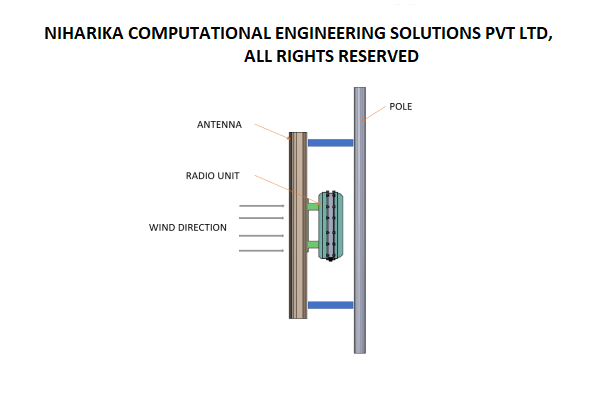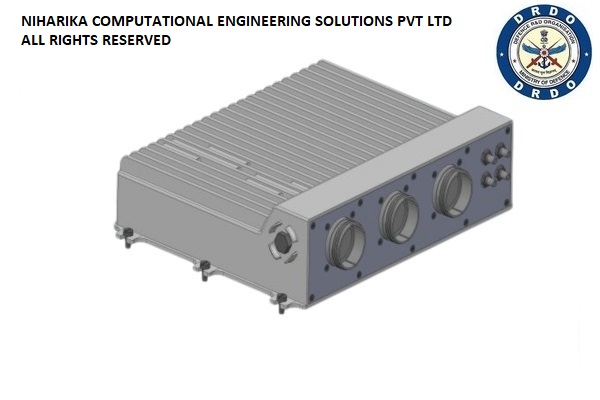PCAMI-1000 is an Airborne ruggedized Instrumentation System that handles excitation, attenuation, signal conditioning, data, embedded video and audio acquisition, encoding, operating numerous buses such as MIL 1553 and Arinc, and onboard data recording and data transmission with chassis of varied slot capacities such as 3, 6, 9 and 13 slots. Our client is a Government of India-approved aerospace and defense R&D unit. We collaborated with the client from the initial stages of the design process. Our domain expertise leveraged with Finite Element Analysis (FEA) technology has accelerated our clients Innovation process. We performed modal analysis, Vibration, Sine sweep, Random vibration analysis, Shock analysis, and Acceleration analysis per military standards (MIL-Std 810H) using Finite Element Analysis (FEA) software. Our meticulous engineering practices yielded reliable analysis results, which enabled our client to explore more design options and make well-informed decisions at the appropriate stages in the product development cycle.
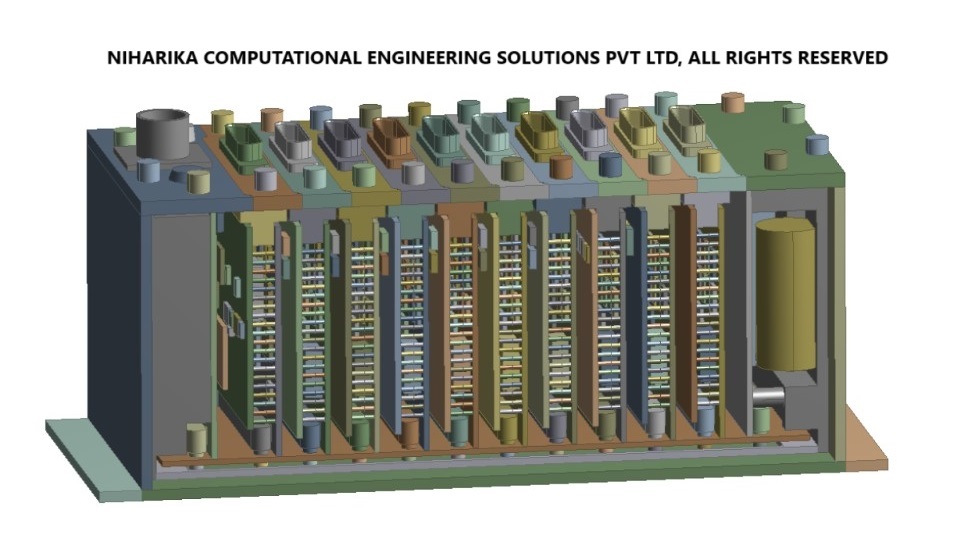
The PCAMI-1000 Enclosure model is meshed with higher order Tet elements & Hexahedral elements. The FE model contains 1358886 nodes &788598 elements. Appropriate contacts are defined between all the parts in the assembly.
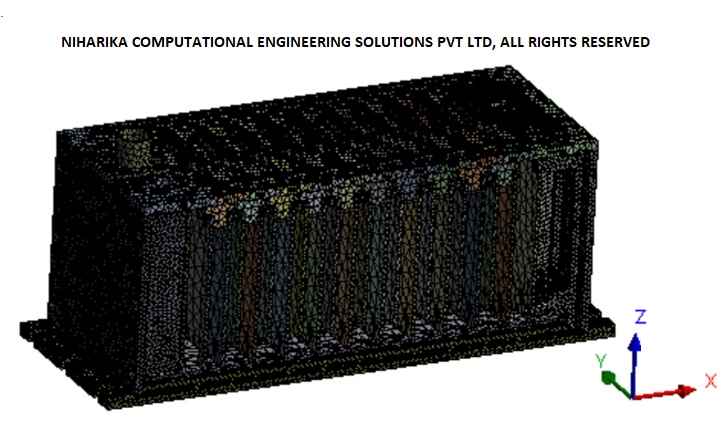
Modal Analysis is performed on the PCAMI-1000 Enclosure for the frequency range: 0–2000 Hz and found 72 frequencies in the range. Mode shape plots are presented for the first 6 modes and dominant frequencies in the X, Y, and Z directions.
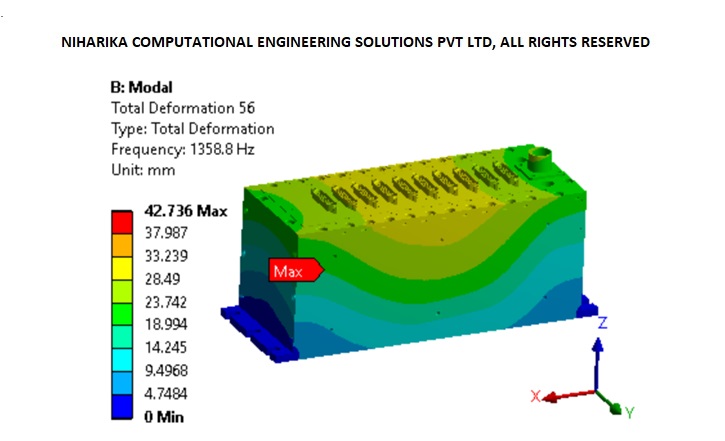
Acceleration analysis has been performed for a 15g load in the x, y, and z directions. The deformation and stress plots corresponding to this analysis are provided. The stresses experienced by all components within the assembly, including the bottom panel, power supply panels, and side panels, remain well within the permissible limits for the specified loading conditions.
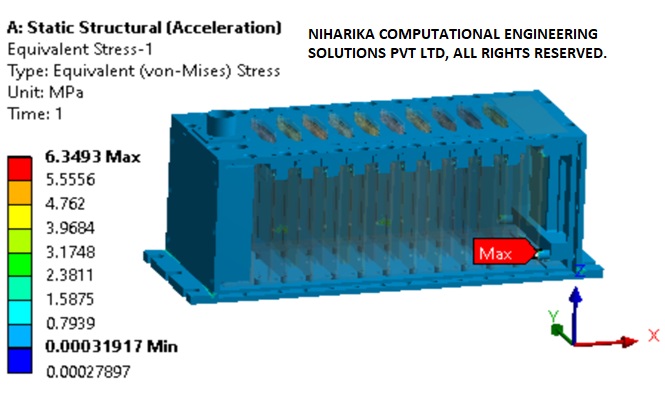
Random vibration analysis is conducted in the x, y, and z axes according to the specified loading profile. The results from the finite element method (FEM) analysis indicate that the stresses encountered by all components of the assembly, such as the bottom panel, power supply panels, and side panels, are consistently within acceptable limits.
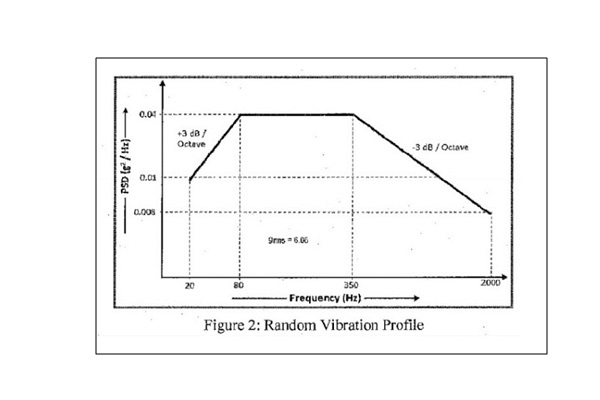
Finite Element Method (FEM) analysis has been conducted on the PCAMI-1000 Airborne ruggedized Instrumentation System, taking into account acceleration and random vibration loads in the x, y, and z axes. The results of the FEM analysis indicate that the stresses encountered by all components of the assembly, such as the bottom panel, power supply panels, and side panels, are comfortably within the allowable limits for the defined loading conditions.
We Got More
Go through All Our Case Studies
CFD analysis of Rotary Vacuum Brazing Furnace-RVBF
RVBF is an Inert gas-circulated, closed-loop Integrated thermal system with operating temperatures up to 1500 Deg Celsius. The Integrated thermal loop consists of a heat treatment chamber, a centrifugal blower for gas circulation, Shell and Tube Heat exchanger to achieve gas cooling, and an Electromagnetic Induction heater to reach a higher operating temperature. Controlled cooling of the job is essential to achieve the desired metallurgical structure after heat treatment. Niharika Computational Engineering Solutions Pvt Ltd (NCES) has collaborated with the client and analyzed the overall thermal performance of RVBF. We conducted transient Computational Fluid Dynamics (CFD) analysis to analyze the cooling of the job during the cooling cycle. Our CFD analysis process is validated with the help of experimental data obtained from the existing RVBF unit, which is of slightly lower capacity. Read More
Thermal and structural analysis of Chemical Vapor Infiltration and Chemical Vapor Deposition furnace
CVI and CVD is a thermo-vacuum chamber operating up to 2500 Degree Celsius. CVI-CVD furnace is mainly to mold high-temperature sustainable composites used in supersonic missiles. This Thermo-vacuum facility is commissioned at DRDL- Hyderabad, the Defence Research and Development Organization (DRDO) propulsion complex, Ministry of Defence, Government of India. The electromagnetic Induction heater is used to generate higher operating temperatures of the order of 2500 Degree Celsius. Niharika Computational Engineering Solutions Pvt Ltd (NCES) has collaborated with the client and conducted Computational Fluid Dynamics (CFD) analysis to assess the thermal performance of the furnace. We also conducted structural analysis (FEA) to predict the thermal expansion of the plunger unit. Read MoreCFD analysis of Digital aircraft engine controller-FADEC
FADEC is a computer-managed aircraft ignition and engine control system used in modern commercial and military aircraft to control all aspects of engine performance digitally. Our client is a Government of India-approved Aerospace and Defense R&D unit. Read More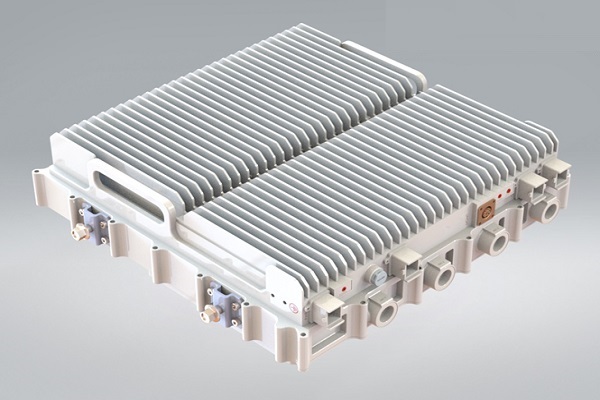
CFD analysis of Multi Band Remote Radio Unit
The advent of 5G technology has brought about unprecedented advancements in wireless communications, enabling faster speeds, lower latency, and increased capacity. These advancements are associated with higher power consumption and increased heat generation in the 5G Remote Radio units.Increasing data rates and network densification require radio units to process larger volumes of data, leading to higher power consumption and heat generation. Environmental factors such as ambient temperature, humidity, and exposure to direct sunlight also impact the thermal aspects of the radio units. Read More